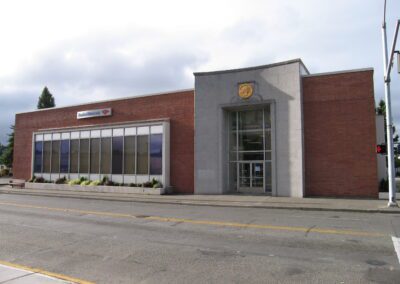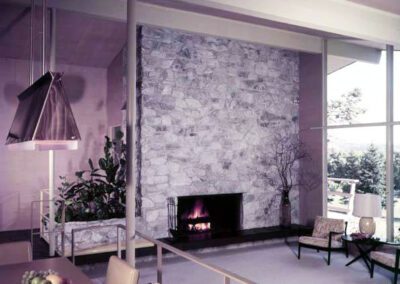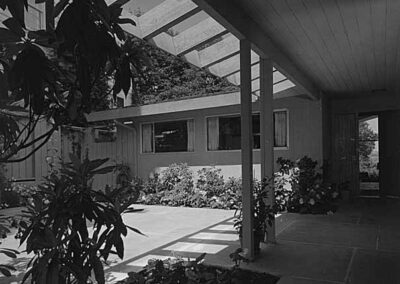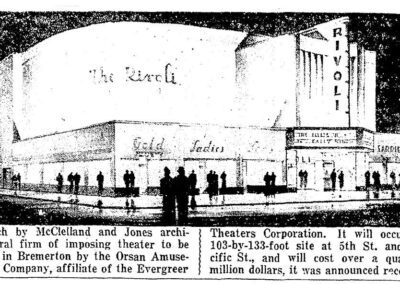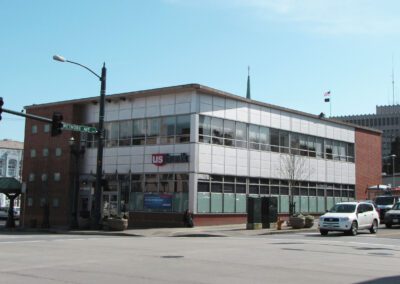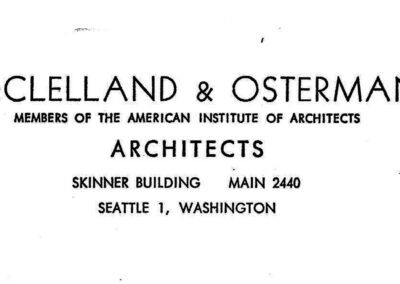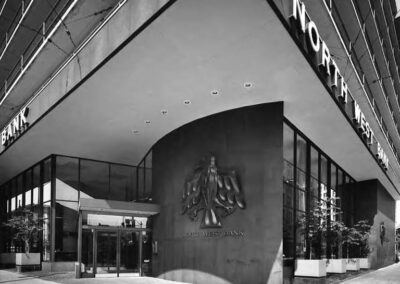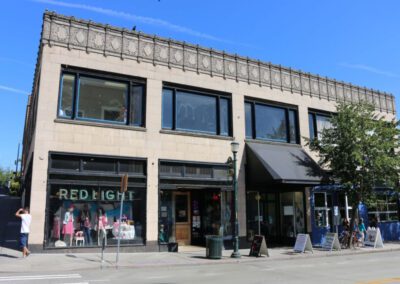
McClelland, Robert F.
(1892 – 1977)
Born on November 2, 1892 in Sioux City, Iowa, Robert “Jack” Fulton McClelland came to Seattle with his family in 1910 at the age of 18. By 1912, city directories list him as an architect, and he self-reported that his formal education was limited to partial architectural training at Massachusetts Institute of Technology in Boston. However by 1918 he is listed as teacher working at the University of Washington with Carl F. Gould and Harold O. Sexsmith. At the time, the three were the only faculty members in the architectural department at the University. After receiving his Washington State architectural license in 1922, McClelland decided to leave teaching and form a partnership with fellow architect Edward F. Pinneh.
Notable Seattle designs include the College Center Building (1927) in the University District, the Dr. Hampson House in Ravenna, and the Silverstrom Building. In 1930, the two partners added Victor N. J. Jones to the partnership. Pinneh left the firm in 1932, but Jones remained with McClelland until 1943. A national award for Architectural Forum’s “Modernize Main Street” competition sponsored by the Libbey-Owens-Ford Glass Company in 1935 brought the two many commissions including several storefront remodels in downtown Seattle and Beyond. Notable projects the Bremerton Estate Theater (1935), the Bremerton Ferry Terminal (1938).
In 1952 McClelland promoted his associate, Hugo Osterman, to full partner and the firm was renamed McClelland & Osterman. Designs during this period include the Florence Crittenton Home for Unwed Mothers (1953); the Gladding, McBean & Company Building (1954) in Seattle; the Lundquist-Lilly Men’s Wear Store (1955); remodel of the downtown Nordstrom Shoe Store (1960); Foodland Store (1960); and an Insurance Office Building (1956) on Belmont Avenue.
During the 1950s and 1960s, the firm specialized in the design of suburban banks. Their designs can be found throughout the state. Projects within the city of Seattle include the Dexter branch of Peoples National Bank of Washington (1957); a remodel of the Magnolia branch of Peoples National Bank of Washington (1961); the Broadway branch of Peoples National Bank of Washington (1965); Peoples National Bank of Washington Computer Center (1968); the North West Bank (1963); and the First Hill branch of Peoples National Bank of Washington (1965).
Outside the city projects include the Lincoln Federal Savings & Loan – Bellevue Branch (1959); Seattle First National Bank (1959) in Olympia; Mid Columbia Bank (1953) in Pasco; the Peoples National Banks in Everett (1959), Federal Way (1960), Kirkland (1964), Bremerton (1964), Mountlake Terrace (1966), Renton (1967), and Tukwila (1968); the Washington Federal Savings & Loan branch in Bothell (1960), and the Walla Walla National Bank (1959).
McClelland was active in the Seattle Chapter of the American Institute of Architects, serving as president for three terms (1934-1936). In 1942 he was appointed to a national AIA committee on industrial relations, which was formed to foster better communication between architects and contractors. He passed away in Seattle on February 23, 1977 at the age of 84.
– Michael C Houser

